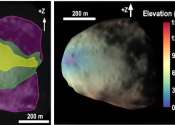Astrophysicists build model to explain to rapid planet formation
Our solar system is our immediate cosmic neighborhood. We know it well: the sun at the center; then the rocky planets Mercury, Venus, Earth, and Mars; and then the asteroid belt; followed by the gas giants Jupiter and Saturn; ...






